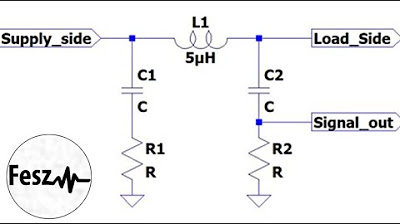what Is Instrument Calibration. Instrument Calibrator. RTD Calibration. Calibration certificates.
Summary
TLDR本视频介绍了仪器校准的概念和重要性,以及如何对RTD(电阻温度检测器)进行校准。仪器校准是确保测量准确性的关键过程,由于环境因素和设备老化,仪器的准确性会随时间降低。校准通过比较已知高精度的校准器和待校仪器的测量值来进行。在工业控制中,准确的测量数据对于控制系统的正确操作至关重要。视频还详细解释了校准过程、校准范围和校准证书的相关内容。
Takeaways
- 📈 仪器校准是确定其准确性的过程。
- ⏱️ 仪器的准确性会因操作条件、机械冲击或极端温度和压力而随时间降低。
- 🔄 为了确保仪器产生的测量数据的准确性,需要定期进行校准。
- 📊 校准通过比较两个仪器的测量值来进行,其中一个是已知高精度的参考仪器。
- 🏭 过程工厂中的控制系统基于仪器提供的测量数据来控制工厂。
- 🔧 校准确保工厂中的测量准确,从而正确控制工厂。
- 🔩 校准器应比被校准的仪器更准确,并且定期由国家度量衡研究所校准。
- 📃 校准前必须确保校准器的有效性。
- 🛠️ 市场上有不同类型的校准器,选择取决于传感器类型、校准环境和所需精度。
- 🌡️ RTD(电阻温度检测器)是一种温度感应设备,其电阻随温度升高而增加。
- 📝 校准RTD通常使用干块校准器或温度浴,通过比较标准电阻与温度图表来确认RTD的准确性。
- 📋 校准完成后,会准备一份包含校准数据、校准日期和每个测量结果的通过/失败声明的校准证书。
Q & A
什么是仪器校准?
-仪器校准是一个确定其准确性的过程。随着时间的推移,由于恶劣的运行条件、机械冲击或极端温度或压力的暴露,仪器的准确性往往会降低。
为什么我们需要校准仪器?
-在过程工厂中,控制系统控制着整个工厂。如果测量数据不正确,那么对工厂的控制也将是不正确的。因此,为了正确控制工厂,工厂中的仪器所做的测量必须是准确的,这就需要定期进行校准。
校准仪器是如何进行的?
-校准是通过比较两个仪器的测量值来进行的,其中一个待校准的仪器的测量值与已知高精度仪器的测量值进行比较。
校准器应该比被校准的仪器准确多少?
-校准器应该比被校准的仪器更准确,并且它的校准器会定期由国家计量研究所维护的更准确的参考标准进行校准。
校准证书的有效期是多久?
-经过更准确标准校准后,这些研究所会为校准器颁发有效期为一年的证书。
在选择校准器时需要考虑哪些因素?
-选择校准器的类型取决于要校准的传感器类型、校准环境以及校准所需的准确性。
常见的校准器有哪些类型?
-常见的校准器包括干块校准器、气动校准器和信号参考校准器等。
如何校准一个新的电阻温度探测器(RTD)?
-通常使用干块校准器或温度浴作为校准器来校准RTD。将待校准的RTD放入温度校准器中,校准器维持用户设置的固定温度,然后使用万用表的电阻模式连接RTD的端子,读取RTD的输出电阻值。
校准过程中如何验证RTD的准确性?
-将RTD的输出电阻值与制造商提供的标准电阻与温度图表进行比较,以找到RTD检测到的确切温度。如果显示的温度与标准值相同或在可接受的偏差范围内,那么RTD被认为是准确的。
校准证书包含哪些内容?
-校准证书包含用于校准的标准列表、校准产生的任何数据、校准日期以及每个测量结果的可能合格或不合格声明。
仪器范围和校准范围有什么区别?
-仪器范围指的是仪器有能力测量的范围,而校准范围是仪器经过测试的值的范围,校准范围由零点和跨度值定义。
如何定义一个压力变送器的校准范围?
-校准范围由零点值(范围的低端)和跨度值(上下范围值之间的代数差)定义。例如,对于一个校准范围为0到300 PSIG的压力变送器,零点值是0,跨度值是300 PSIG。
Outlines

This section is available to paid users only. Please upgrade to access this part.
Upgrade NowMindmap

This section is available to paid users only. Please upgrade to access this part.
Upgrade NowKeywords

This section is available to paid users only. Please upgrade to access this part.
Upgrade NowHighlights

This section is available to paid users only. Please upgrade to access this part.
Upgrade NowTranscripts

This section is available to paid users only. Please upgrade to access this part.
Upgrade NowBrowse More Related Video

How to calibrate RTD temperature transmitters - Beamex

What is Sensor Calibration and Why is it Important?

RTD in detail tutorial explaining 2 Wire RTD , 3 Wire RTD and 4 Wire RTD

How to become an expert in Vibration Analysis

EMC tutorials - [1/3] Building an LISN

Cómo preparar papeles de trabajo para declaración anual sueldos y salarios y asimilados a salarios
5.0 / 5 (0 votes)
